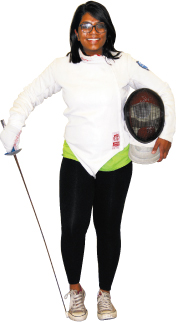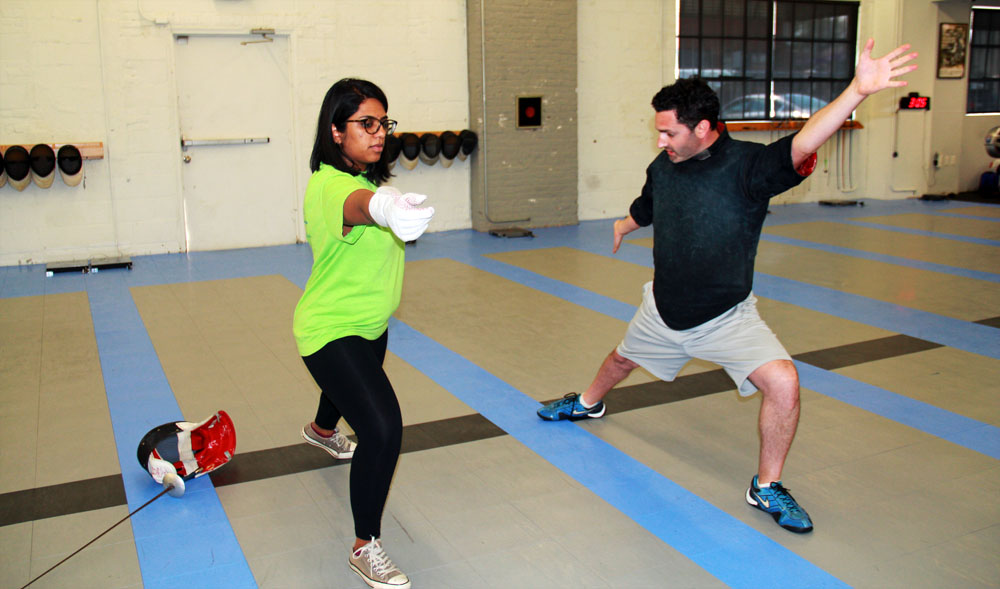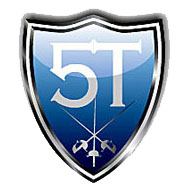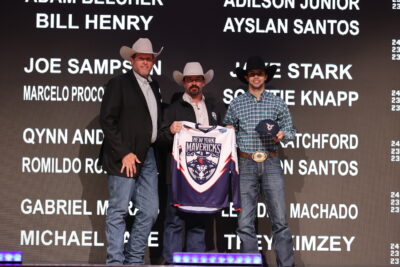
As one of the millions of people who saw Wonder Woman recently, I too, now have a new life goal to become an Amazon warrior. And while training with a bunch of fierce female fighters on Paradise Island is impossible (unless someone would like to fund this trip, in which case I am extremely willing) I settled for the next best thing: a trip down the block to 5T Fencers Club, where I could work on my sword-slinging, or in this instance, foil-wielding, skills.
If you’re going to learn fencing, 5T Fencers is the place to do it. Not only are the staff professional fencers who have won championships around the world, but the school has produced numerous superstars, who go on to garner medals on both the national and international stage. Owner and head coach Jonathan Tiomkin competed in the 2004 Olympic Games in Athens, before opening up 5T Fencers in Hewlett, then relocating to Mineola in January of 2015.

Fencing gear typically includes a protective white mask, jacket, glove and pants (known by fencers as knickers), but since I wouldn’t be dueling Inigo Montoya-style, I settled for just a fencing glove (which feels like a really nice kitchen glove, if such a thing exists) and a mask (protect the money-maker, as they say).
You can’t learn fencing without the basics and the beginning of my lesson consisted of my instructor, national champion Gidon Retzkin, teaching me the foundations. Step one was learning the salute, which is done at the beginning and end of each bout. That was followed by working on my footwork. There are four basic movements in fencing: en garde (your basic at-the-ready stance), advance (the “I’m coming to get you” stance), retreat (the “I’m backing away” stance) and lunge (the “you’re about to get stabbed” stance).
There are three types of weapons in fencing, saber, épée and foil, and 5T specializes in the latter, which was historically used by nobles to train for fights to defend one’s honor. How valiant! This was totally fitting into my princess dreams.
In foil, points are scored by touching your opponent’s torso; fencers wear an electronic scoring device and stay on electronic strips, which register hits during sparring. Preliminary bouts go up to five-touches, direct elimination rounds go up to 15.
More than just the physical exertion of coordinating your movements perfectly and rapidly, fencing is also mentally grueling, as fencers have to quickly anticipate their opponent’s next move.

“Many people call fencing physical chess,” Retzkin said. “You want to trick your opponent and use tactics that are very mental. You want to take you opponent out of balance, get them frustrated. You want them to do what you want.”
5T offers private and group classes for both children and adults, of all experience levels. Biweekly children’s beginner classes include fencing games, balance and coordination exercises and footwork, while weekly adult beginner classes include more focused drill work and fencing.
Retzkin noted that not only does fencing open the door for scholarships to some elite colleges, it also appeals to those looking for a unique sport that challenges them physically and mentally or are looking to live out their sword-wielding dreams.
 And while it’s not recommended, they probably won’t judge you if you wear a Zorro mask the whole class.
And while it’s not recommended, they probably won’t judge you if you wear a Zorro mask the whole class.
Find out more by calling 516-295-4148 or visiting www.5tfencersclub.com.



















